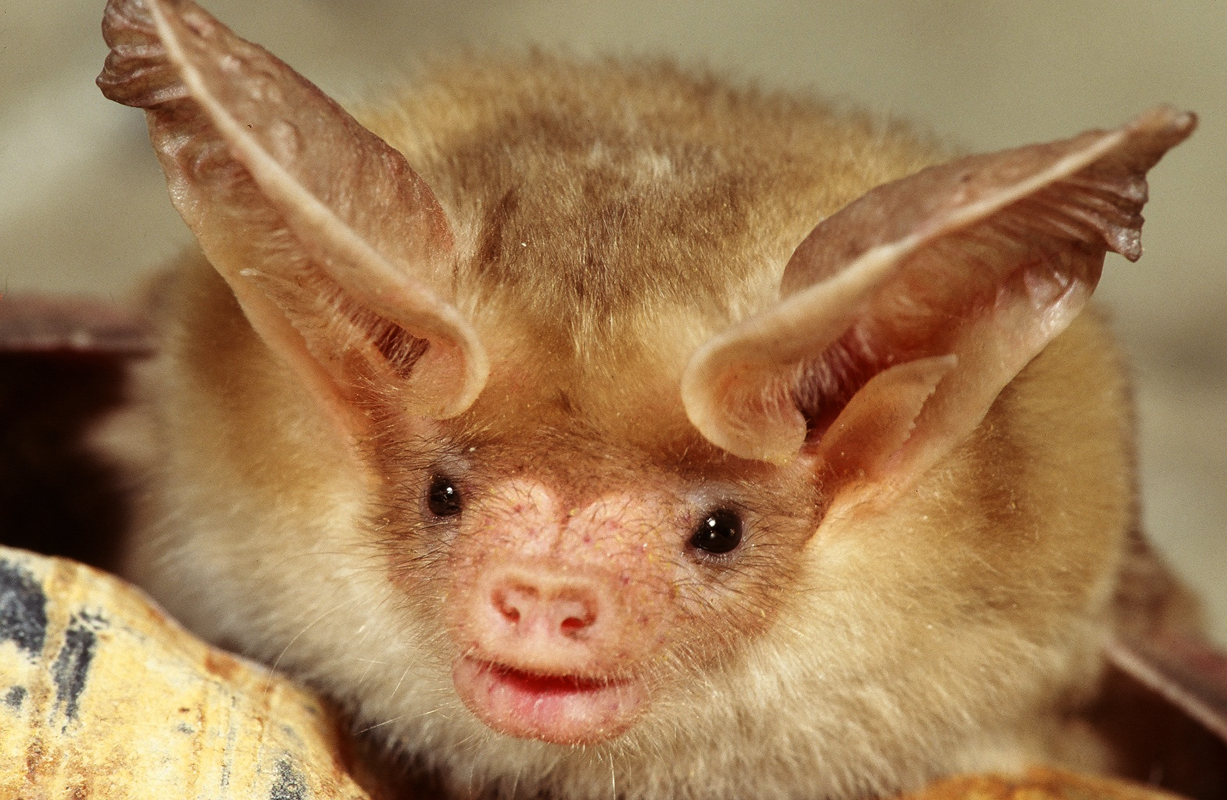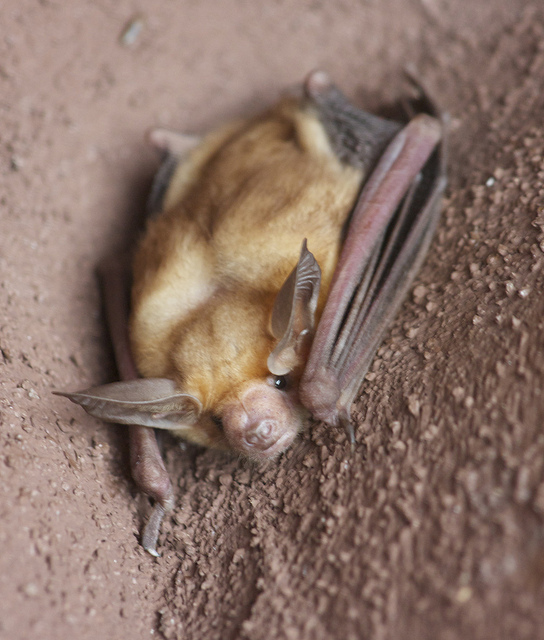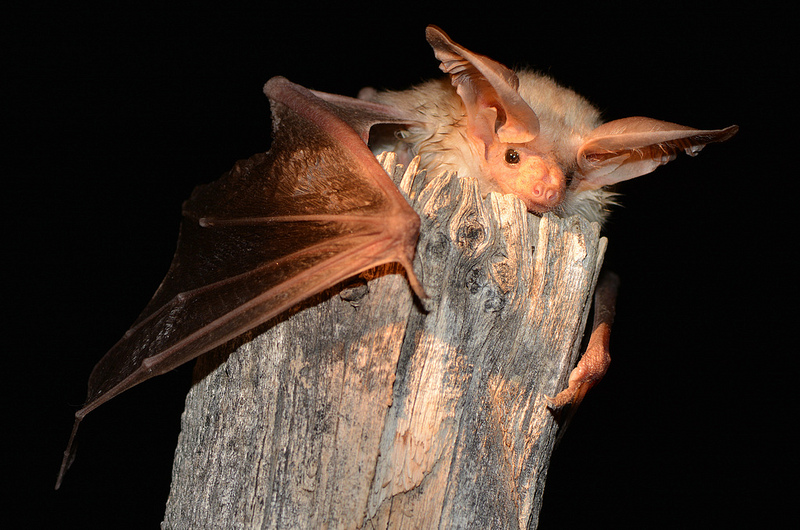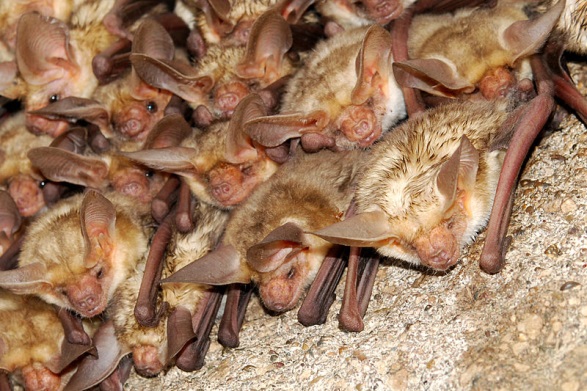Habitat
Along the western border of North America, from British Columbia, Canada down through central Mexico, the large eared pallid bat (Antrozous pallidus) thrives. They have been observed in their natural habitats in the Clarno basin of Central Oregon in the USA (Arnold and Wilkinson, 2011) and in Baja California, Mexico (Frick et al., 2009). While on the surface these regions couldn’t seem more different, they share a common feature that is found in the niches of all A. pallidus: multiple crevices. But more specifically, crevices in which the pallid bats can call home. These crevices are formed in a variety of locations due to high rock and cliff formations (Frick et al., 2009).
According to Arnold and Wilkinson (2011), the Antrozous pallidus that were studied in Oregon use echolocation to find these crevices and call out to other members of their species to come to the same location. The habitat that these pallid bats live in is typical to that of dry grassland. It has shrubbery such as Artemisia tridentate (sagebrush) (similar species found here), Juniperus virginianus (juniper trees) (another species from the genus Juniperus is seen here), and Bromus tectorum (cheat grass) (another grass is seen here) (Arnold and Wilkinson, 2011). These types of foliage are ideal living environments for the arthropods that A. pallidus consume.
In warmer
climate areas, such as that in Baja California, the pallid bats not
only consume arthropods such as scorpions (see a water scorpion
here) and crickets but also the nectar from the flowers of Pachycereus
pringlei a cardon cactus (Frick et al., 2009). Physically,
pallid bats are not structured to be able to nectar-feed. They do
not have the long snout or tongue that is typically required to be
able to get the nectar from the P. pringlei. However, the
Antrozous pallidus were able to adapt their own way to
drink the nectar without having these morphological characteristics
(Frick et al., 2009).
They literally grasp the edge of the flower and plunge their face
and torso into the middle of the flower to drink the nectar. The
pallid bats have developed a mutualistic relationship with this
cardon cactus, and this relationship will be described in more detail
in the interactions section.
crickets but also the nectar from the flowers of Pachycereus
pringlei a cardon cactus (Frick et al., 2009). Physically,
pallid bats are not structured to be able to nectar-feed. They do
not have the long snout or tongue that is typically required to be
able to get the nectar from the P. pringlei. However, the
Antrozous pallidus were able to adapt their own way to
drink the nectar without having these morphological characteristics
(Frick et al., 2009).
They literally grasp the edge of the flower and plunge their face
and torso into the middle of the flower to drink the nectar. The
pallid bats have developed a mutualistic relationship with this
cardon cactus, and this relationship will be described in more detail
in the interactions section.
Another species that live in the same habitat as the Antrozous pallidus is another kind of bat called Leptonycteris yerbabuenae (Mexican lesser long-nosed bat) (Frick et al., 2009). Initially there was no competition between these two species for food because pallid bats are normally insectivorous (feed on insects) and L. yerbabuenae are nectarivorous (feed on nectar). Some of the insects pallid bats consume in this region are moths, which feed off of the cacti flowers (Frick et al., 2009). It is predicted that the pallid bats adapted the nectar as part of their diet by following the moths to the flowers. This created some competition for the L. yerbabuenae; however, it was noticed that the number of A. pallidus that consume the cacti flower nectar where the other bats were present decreased compared to other areas (Frick et al., 2009).
Return to Adaptation Go to Reproduction
Return Home



